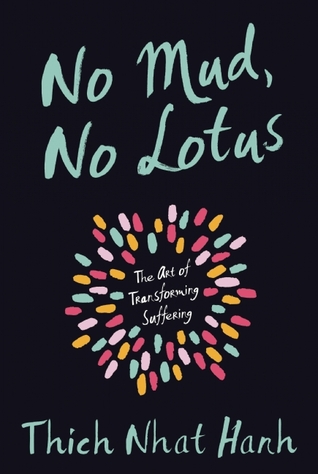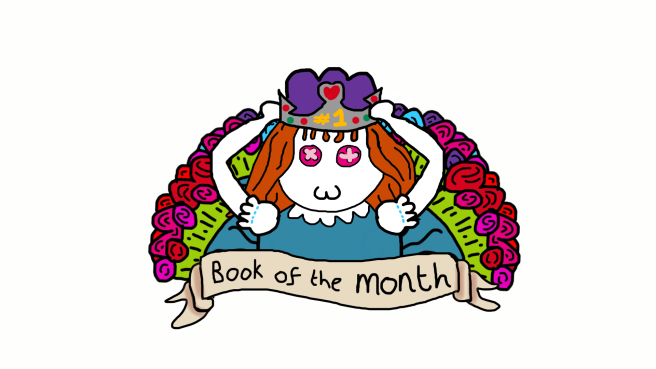
Goodreads Link | Author Website
I can only hope to one day see the world as Thich Nhat Hanh does…
TL;DR – A collection of personal experiences, Buddhist teachings and mindfulness practices to help heal the suffering of the world.

RAGDOLL RATING: 4/5 BUTTONS
Why I read it…
This was part of my ongoing practice of reading a Buddhism book before meditation. I chose this book because I was so moved by The Heart of the Buddha’s Teaching (Thich Nhat Hanh) that I felt I had to read more of Thay’s writings, and I chose this book specifically because I liked the title.
The Book…
(Please note: In the interests of my own sanity and time saving, I will refer to the author by the honorific Thầy – teacher/master, instead of his full name)
“Most people are afraid of suffering. But suffering is a kind of mud to help the lotus flower of happiness grow. There can be no lotus flower without the mud.” ~Thich Nhat Nanh
The tagline for this book is “The art of transforming suffering”, and that is what this book is, a guidebook for turning suffering into – well, not suffering.
The first (and biggest) section of this book is dedicated to discussing suffering, it’s effects on us as individuals, and on society itself. Each chapter is split into little sections that are written with the authors usual somewhat eclectic mix of personal stories, scripture and metaphor.
In the first chapter, Thầy tells us how suffering and happiness are linked – you cannot have one without the other, and suggesting that the causes of suffering and happiness can be the same thing. Here he uses an example of being cold:
“Cold air can be painful if you aren’t wearing enough warm clothes. But when you’re feeling overheated (…) the bracing sensation of cold air can be a source of feeling joy…” Thich Nhat Hanh (p.11)
Thầy also provides useful practices you can try for yourself in times of suffering, to try and provide some relief, either for you or for the people around you. Chapter 5, for example, is dedicated to 5 practices for nurturing happiness, such as letting go of attachment, and simple meditations.
The second section of the book is entitled ‘Practices for Happiness’ and details 8 (relatively) simple things we can all try to do, to help transform our suffering and the suffering of others.
What I liked…
One thing that really appealed to me in this book was that Thầy always provides multiple forms of explanation and example to any point he makes. Nothing is left to chance. You will often find multiple metaphors, personal examples and stories from the Buddhist canon to help aid understanding of what can be difficult points. Some people might find this annoying and it could be interpreted as unnecessary repetition, but I personally find that it helps me understand each point much better because of it.
On a similar note, the combination of traditional Buddhist stories and personal anecdotes is also refreshing. One problem I often find with guides for personal improvement, is that if often the steps seem impossible – if you tried them, you would fail – and once you feel like it’s too difficult, you stop paying attention. Having examples of how Thầy puts this guidance into practice – is really refreshing. But this book goes one step further. We also have examples where Thầy talks about times he has found himself confused about teachings (for example the section entitled “Did the Buddha suffer”) – which is really reassuring. It’s nice to see someone admit that they didn’t always understand how these things worked, because often I find hearing guidance from people comes across as if the knowledge was inside them from birth, which as an often-confused person, is really quite disheartening.
What I disliked…
I’m not sure this is so much a dislike in the traditional sense – it’s certainly not the authors fault – but at times this book was hard to read. Not in the usual sense, the language is pretty straightforward, it’s written clearly and has lots of examples – it’s not an ‘advanced text’ or anything like that. It’s the concepts addressed in the book.
There is guidance in this book that seems difficult, if not impossible to follow. For example, there is a place in the book (although I can’t find the specific page as my bookmark fell out) where Thầy talks about how to respond to somebody else’s anger. He encourages us not to respond in kind, not to become angry ourselves or to shout or defend ourselves. Instead he tells us to listen, apologise for your part in this persons pain and just hear them out. Then later, when things are calmer you can try to transform this persons view should an opportunity present itself.
Now, I totally see how this could work. In fact I know it works at times because I’ve done it – not on anything particularly important mind you, but it can work. Even if I hadn’t actually put this into practice, I would be able to see the logic behind it because it is all explained in a clear and simple fashion. BUT, this – and other pieces of guidance – can be really, really daunting. I know on several times during this book, I stopped reading and thought to myself;
“How the hell am I supposed to pull that off!?”
I suppose the thing is, it is all very well explained and I can see what to do, and why I should do it and all those nice things that should make it seem like a walk in the park, but in the back of my head something is telling me the whole thing is nuts. The teachings in this book can be hard to process and accept – that’s just conditioned into us I suppose, and something we all need to unlearn. Just be aware of it.
Final thoughts…
This book is well thought out, brilliantly written and no doubt it will prove incredibly useful in the future. I have already attempted to put some of the teachings into practice.
The book is clear, but some of the concepts are hard to digest. Your mind may try and reject them, even though they are really good stuff. My advice is if you find yourself resisting something in the book, put it down, breath deeply for a minute or two, then start reading again. It will be worth it.
This book is now on my re-read pile. I recommend this to everyone.
___________________________________________
Please note: I am in no way affiliated with the author or publishers. I bought this book with my own money for my own reasons. The opinions contained within are my own and have not been influenced by any external entity!





















You must be logged in to post a comment.